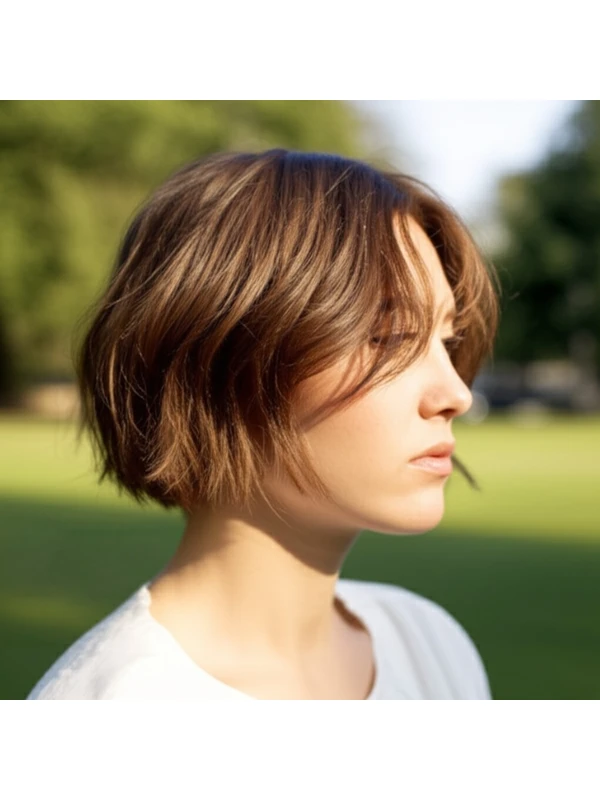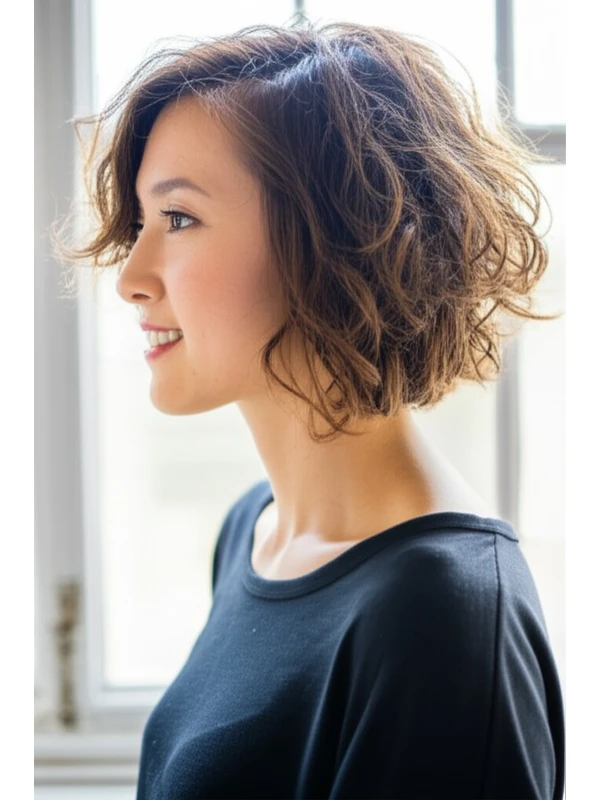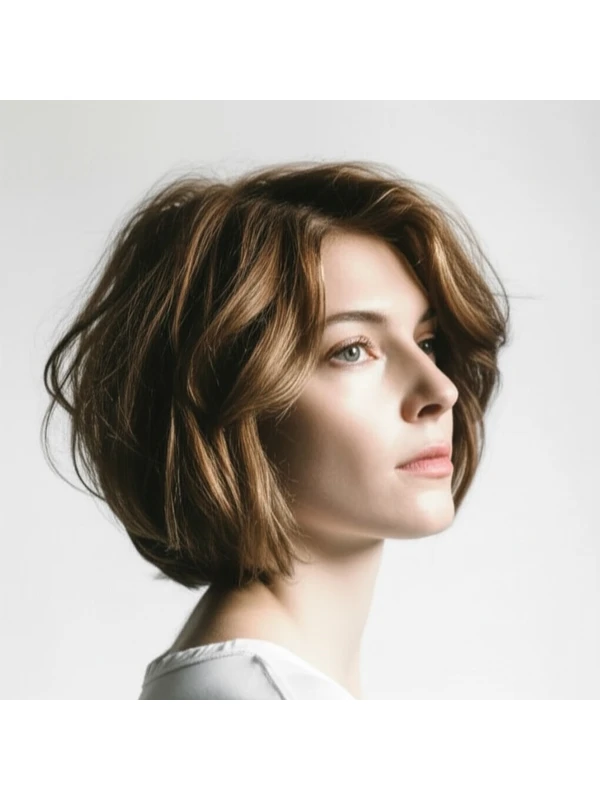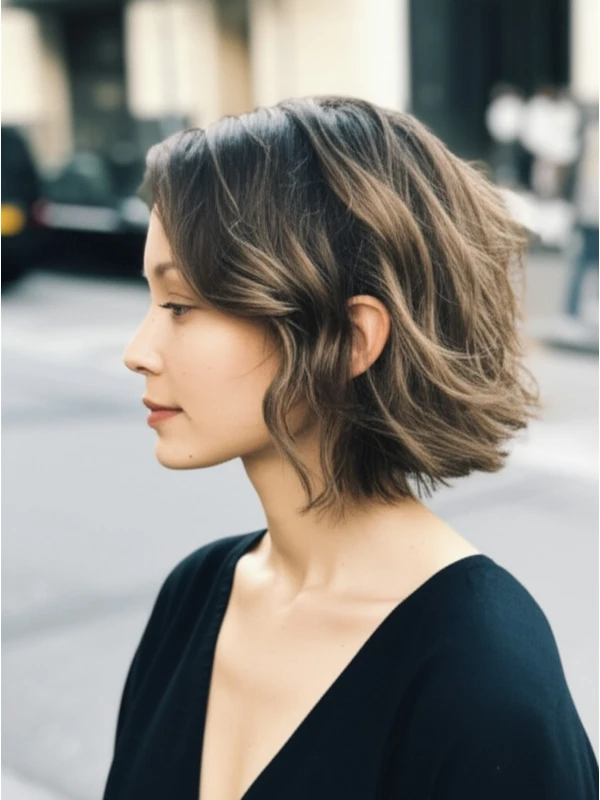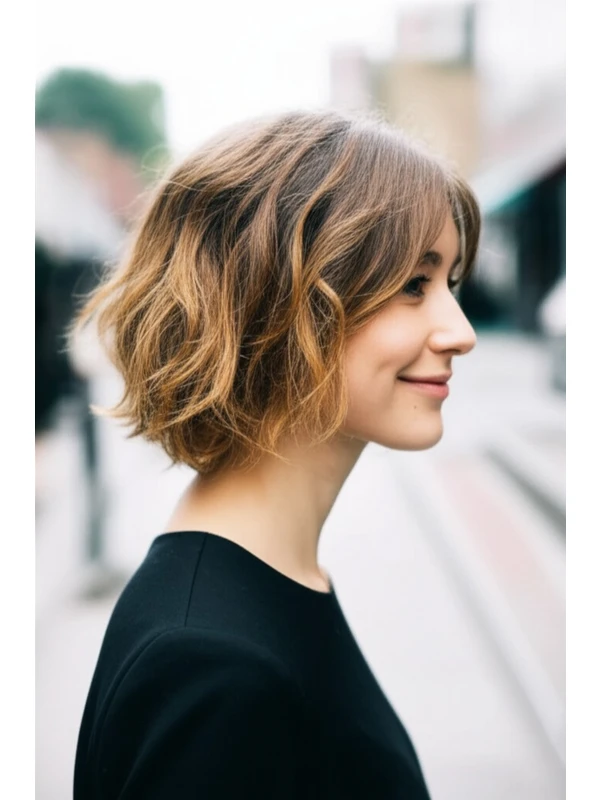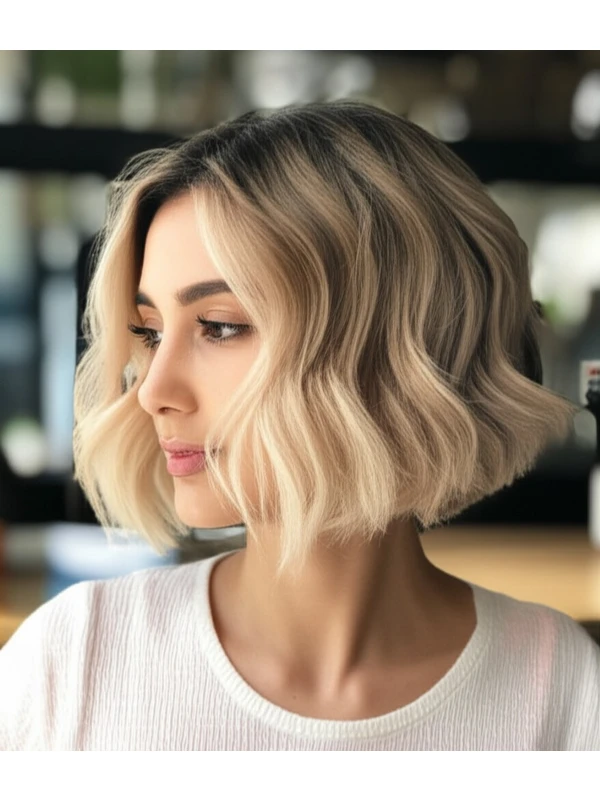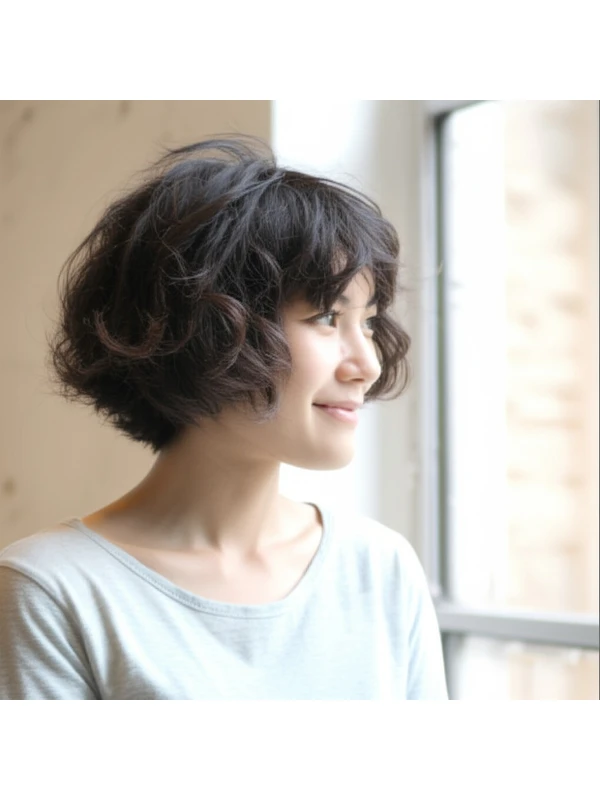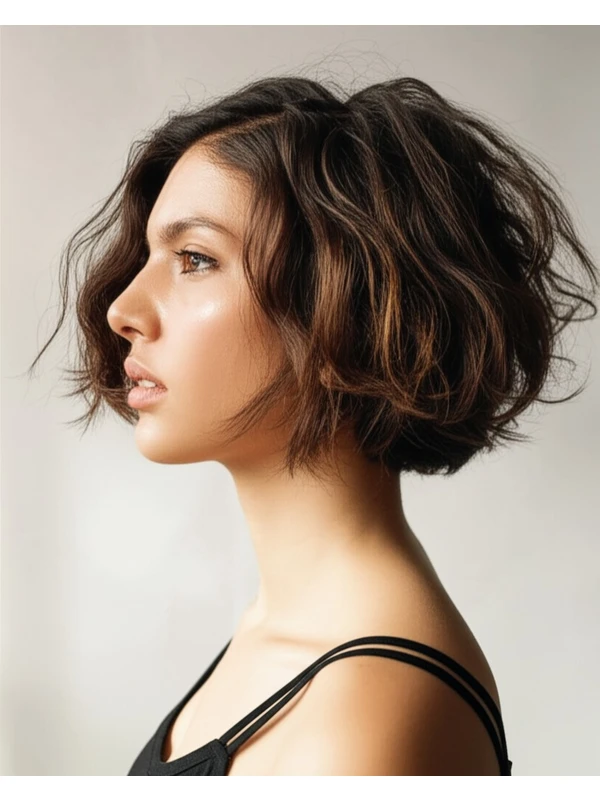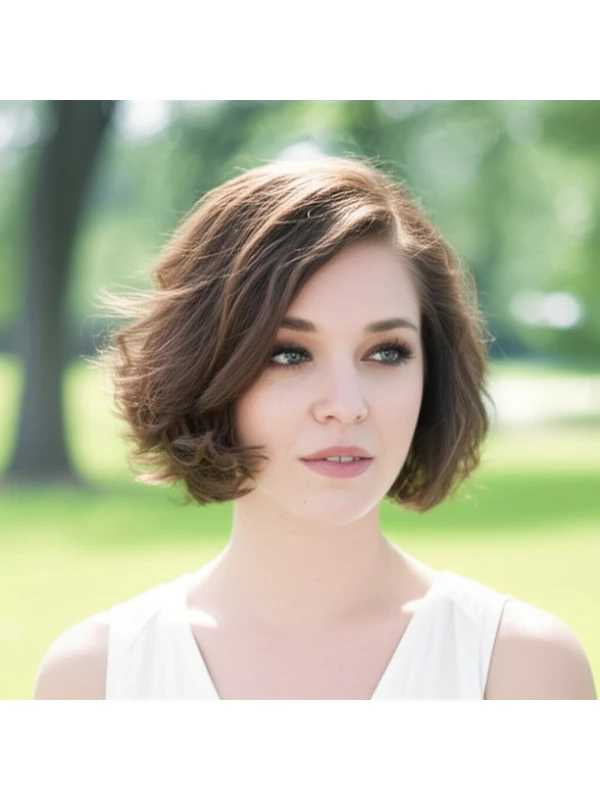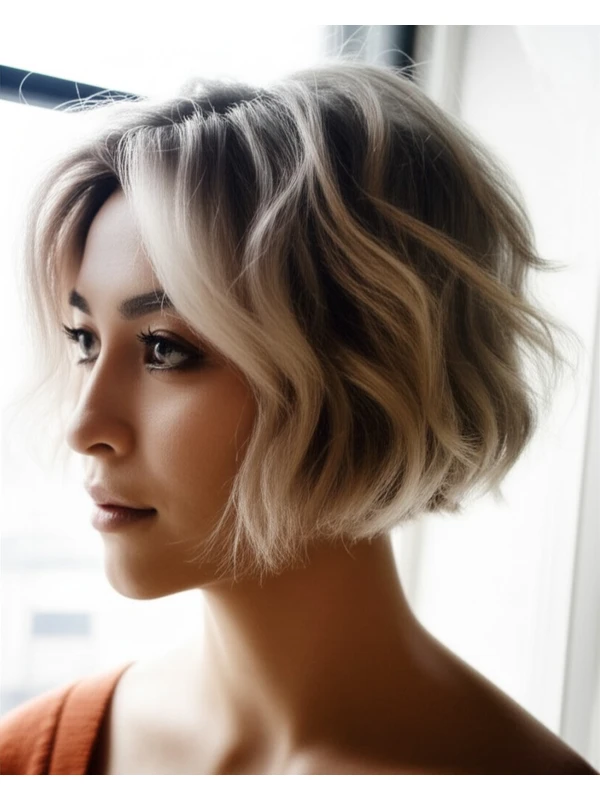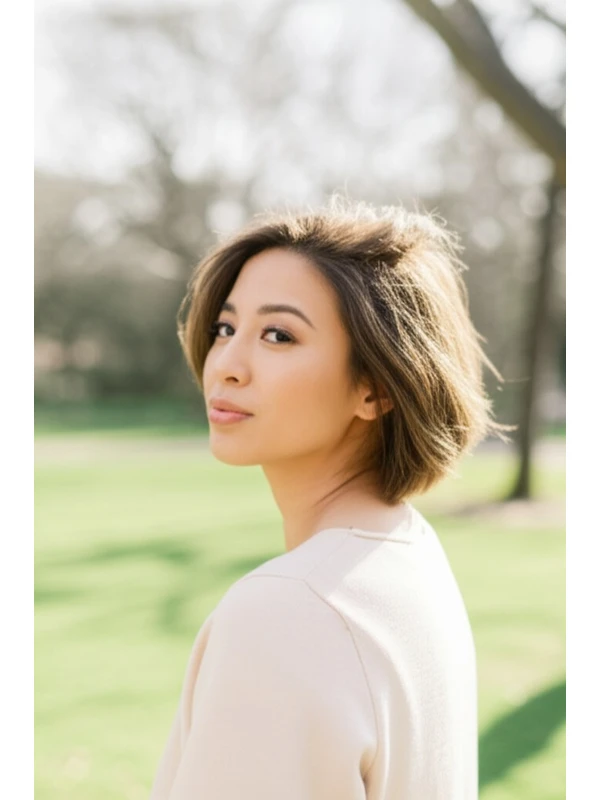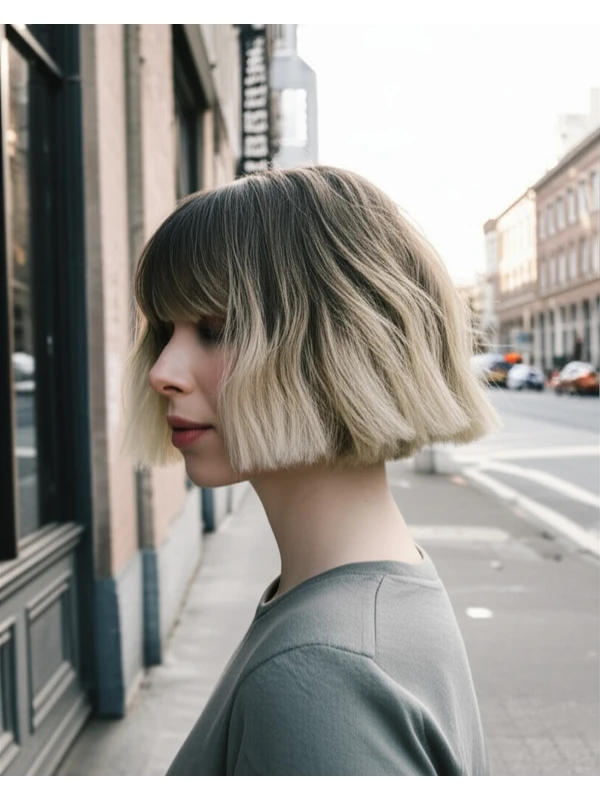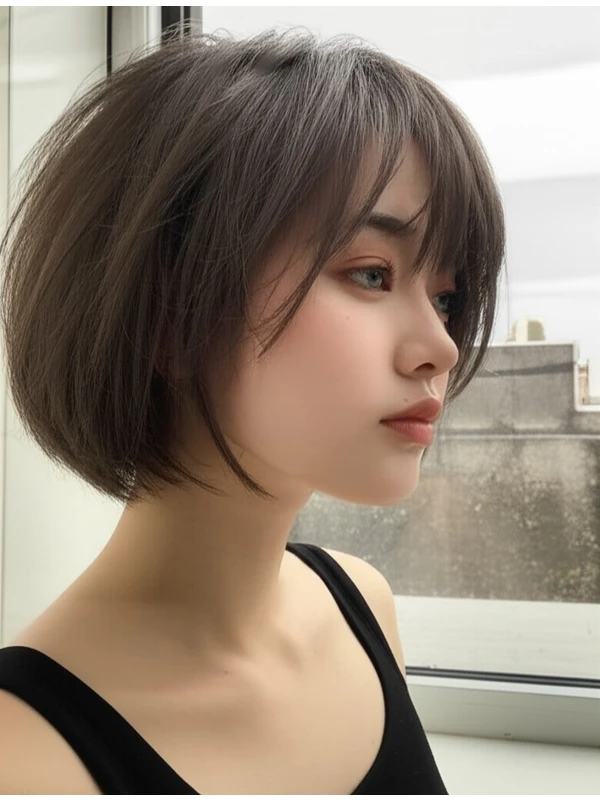#The Wavy Bob: Your Guide to Effortless Chic
The wavy bob is a consistently popular hairstyle for good reason – it’s flattering, versatile, and can feel both polished and relaxed. This guide will break down everything you need to know about rocking this look, from finding the perfect length to keeping it looking its best.
#1) Background & Definition: What Is a Wavy Bob?
The wavy bob is essentially a short-to-medium layered haircut with movement and texture. Think of it as a classic bob that's been infused with playful waves – whether those are natural or created through styling.
Key Features:
- Layering: Layers are crucial for creating the wave pattern and preventing a blunt, heavy look.
- Shape: The overall shape can vary from gently rounded to more angled and edgy.
- Movement: The waves add softness and dimension, making the hair appear fuller and more dynamic.
Typical Length Ranges:
- Chin-Length Bob: A classic choice that hits around the chin or slightly below.
- Collarbone Bob (Lob): Extends to the collarbone – a longer, more versatile option.
- Longer Bobs: Can reach just past the shoulders, offering even more styling flexibility.
Alternative Names:
You might also hear it called: textured bob, shaggy bob, wavy lob, layered bob.
#2) Face Shape Fit: Finding Your Ideal Angle
The beauty of a wavy bob is its adaptability. However, certain variations will flatter different face shapes better than others.
- Oval: Lucky you! An oval face shape suits almost any wavy bob length and angle. A side part adds extra balance.
- Fringe Option: A wispy or curtain fringe softens the features further.
- Round: Opt for a longer, angled bob (lob) that elongates the face. Avoid blunt cuts at chin level as they can accentuate roundness. Volume on top helps create height and slimness.
- Fringe Option: A long, side-swept fringe is your best bet – avoid short, straight bangs.
- Square: Soften a strong jawline with a wavy bob that has rounded layers and face-framing pieces. A slightly longer length (lob) works well.
- Fringe Option: A soft, textured fringe can help break up the angles of a square face.
- Heart: A chin-length or lob with side-swept waves balances a wider forehead and narrower chin. Volume at the jawline adds symmetry.
- Fringe Option: A wispy, eyebrow-grazing fringe is flattering.
- Diamond: Like oval faces, diamond shapes are generally very versatile with this style! A slightly layered bob will soften angles.
- Fringe Option: Side swept or curtain bangs work well to balance the face shape.
- Oblong (Long): A shorter wavy bob with more volume at the sides can visually widen a long face. Avoid styles that add too much height on top.
- Fringe Option: A blunt, straight-across fringe can help shorten the appearance of an oblong face.
#3) Body Proportions & Height Guidance: Tailoring to Your Silhouette
The wavy bob isn't just about your face; it should also complement your overall body shape and height.
- Petite: Shorter bobs (chin-length or slightly above) prevent the hair from overwhelming a smaller frame.
- Average Height: Most lengths work well, allowing for experimentation with different angles and volumes.
- Tall: A longer bob (lob) balances proportions without looking too short.
- Narrow Shoulders: Layers that add volume around the shoulders create a more balanced silhouette.
- Broad Shoulders: Avoid excessive volume at the shoulder line – opt for a slightly sleeker, angled style.
- Short Neck: A bob that hits just below the chin can visually lengthen the neck. Avoid very short bobs or styles with too much height on top.
- Long Neck: Shorter bobs (chin-length) and styles with more volume at the crown help fill out a longer neck.
#4) Works Best With Hair Types & Densities: Understanding Your Texture
The wavy bob is adaptable, but understanding your hair type is key to achieving the desired result.
- Straight Hair: Will need styling (curling iron, wand, or rollers) to create waves. Layering is essential for movement.
- Wavy Hair (2A-2C): This style will enhance natural texture! The layers help define and separate the waves.
- Curly/Coily Hair (3A-4C): The wavy bob can work with curls, but it's crucial to consider shrinkage. A longer length is usually needed to account for curl compression. Consult a stylist experienced in cutting textured hair.
- Shrinkage: Coils and tighter curls will appear shorter than they actually are when dry. Factor this into the desired length!
- Fine Hair: Layers add volume, but too many can make the hair look thin. A blunt cut at chin-length can create an illusion of thickness.
- Medium/Thick Hair: Can handle more layers and styling without looking sparse.
- Density Tips: If you have low density (thin), focus on creating volume through layering and root lift products. High density (thick) hair might benefit from thinning shears to reduce bulkiness.
#5) Styling Variations: From Casual Cool to Evening Glam
The wavy bob’s versatility shines in its styling options.
- Sleek vs Textured: A sleek style uses a smoothing serum and minimal texture, while a textured look embraces the natural waves with texturizing spray or sea salt spray.
- Middle vs Side Part: A side part adds asymmetry and volume. A middle part can create a more balanced, symmetrical look.
- Fringe Variations: Wispy, curtain bangs, blunt fringes – each alters the overall vibe of the style.
- Occasion Styling:
- Casual: Air-dried with sea salt spray for effortless waves.
- Office: Sleek and polished with a smoothing serum and minimal styling.
- Evening: Use hot rollers or a curling iron to create more defined, glamorous waves; add hairspray for hold.
#6) Maintenance: Keeping Your Bob Beautiful
Regular trims are essential for maintaining the shape of your wavy bob.
- Trim Cadence: Every 6-8 weeks (or sooner if you notice it losing its shape).
- At-Home Routine: Gentle shampoo and conditioner, leave-in conditioner to hydrate, styling product to enhance waves or create texture.
- Heat vs Air Dry: Minimize heat styling to prevent damage. When using heat, always use a heat protectant spray.
- Product Checklist:
- Shampoo & Conditioner (suited for your hair type)
- Leave-in Conditioner (for moisture and detangling)
- Mousse or Root Lifter (for volume)
- Texturizing Spray/Sea Salt Spray (for waves)
- Smoothing Serum (for sleekness)
- Hairspray (for hold)
- Estimated Daily Styling Time: 15-30 minutes, depending on the desired style and hair type.
#7) Grow-Out Roadmap: From Bob to… What?
The wavy bob transitions gracefully as it grows out.
- Months 1-3: The shape is most defined. Regular trims maintain the bluntness or layering.
- Months 4-6: As it lengthens, consider adding more layers for continued movement and avoiding a boxy look. A lob style emerges!
- Maintaining Shape: Between cuts, use styling products to enhance waves and keep the shape intentional.
#8) Color Pairings: Enhancing Your Look
Color can dramatically elevate your wavy bob.
- Cool Undertones (ash blonde, silver, cool brown): Will create a modern, sophisticated look.
- Warm Undertones (golden blonde, caramel brown, copper): Adds warmth and dimension.
- Low-Commitment Options: Balayage or highlights add subtle dimension without requiring a drastic color change.
#9) Season & Occasion Guide: Adapting to the Moment
- Spring/Summer: Embrace lighter textures with sea salt spray for beachy waves.
- Fall/Winter: Add warmth with richer tones and use smoothing products for a more polished look.
- Work: Sleek, controlled waves are professional and put-together.
- Weddings/Parties: Glamorous curls or textured waves add flair and personality.
#10) Cost & Time: What to Expect at the Salon
- Salon Time: Typically 1 - 2 hours for a new cut, less for trims.
- Estimated Price Range: Moderate – expect to pay more than for a simple trim but less than for complex coloring services.
#11) Pros & Cons: Weighing Your Options
Pros:
- Flattering on many face shapes and hair types.
- Versatile styling options.
- Relatively low-maintenance (with regular trims).
- Can create the illusion of thicker hair.
Cons:
- Requires some styling effort to achieve desired waves (unless naturally wavy).
- Regular trims are essential for maintaining shape.
- May require more product than longer hairstyles.
#12) Salon Consultation Script: Questions to Ask & Be Prepared For
Here’s a checklist of prompts you can use when consulting with your stylist:
- "I'm interested in a wavy bob, but I'm worried about [specific concern - e.g., my round face/fine hair]."
- "Can we discuss the best length for my face shape and shoulder width?"
- “What kind of layers would you recommend to enhance my natural wave pattern?”
- "How can I style this at home with minimal effort?"
- "Could you show me some examples of wavy bobs that work well with [my hair type/color]?"
#FAQs: Your Burning Questions Answered
- Can a wavy bob work on very straight hair? Yes, but it will require heat styling to create the waves. Layering is key!
- How do I prevent my wavy bob from looking blunt? Layers are essential! Ask your stylist for soft, face-framing layers.
- What’s the difference between a wavy bob and a shaggy bob? A shaggy bob tends to be more textured and undone, while a wavy bob can be styled sleeker or more polished.
- Will a wavy bob make my hair look thicker? Yes! Layers create volume and movement, making fine hair appear fuller.
- How do I avoid the “triangle” shape with a shorter bob? Ask your stylist to ensure even layering throughout the haircut.
- Can I still wear a ponytail with a wavy bob? It might be tricky depending on the length but it's usually possible! A higher, looser ponytail looks best.
